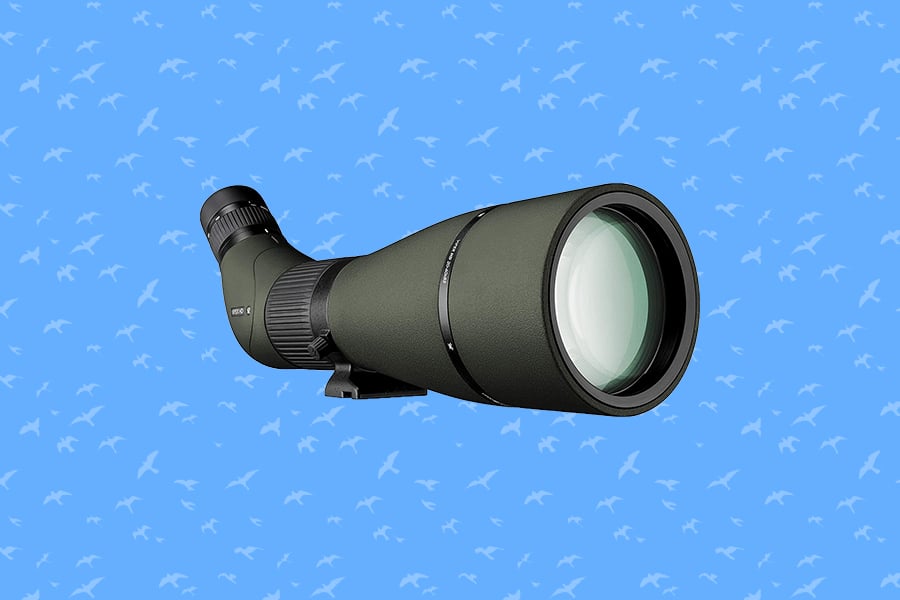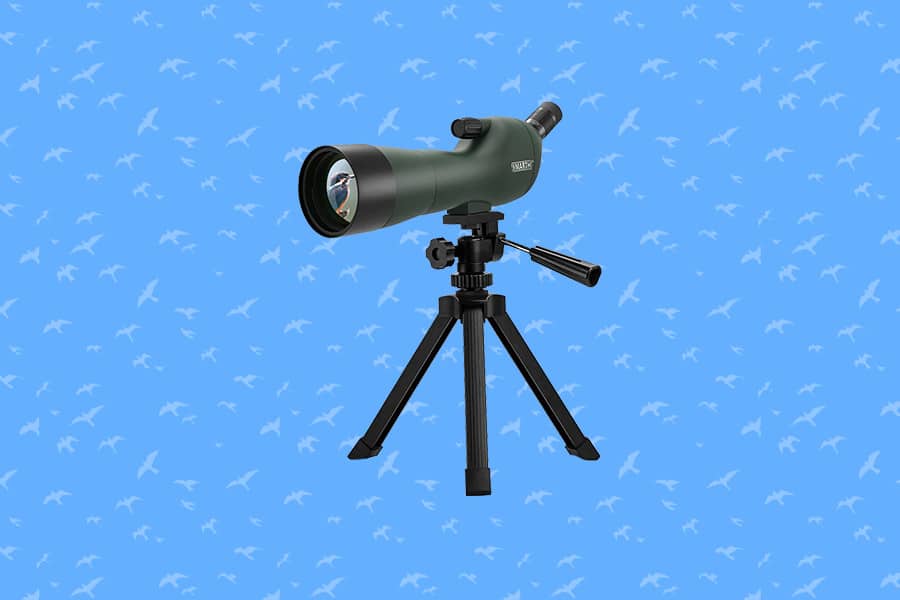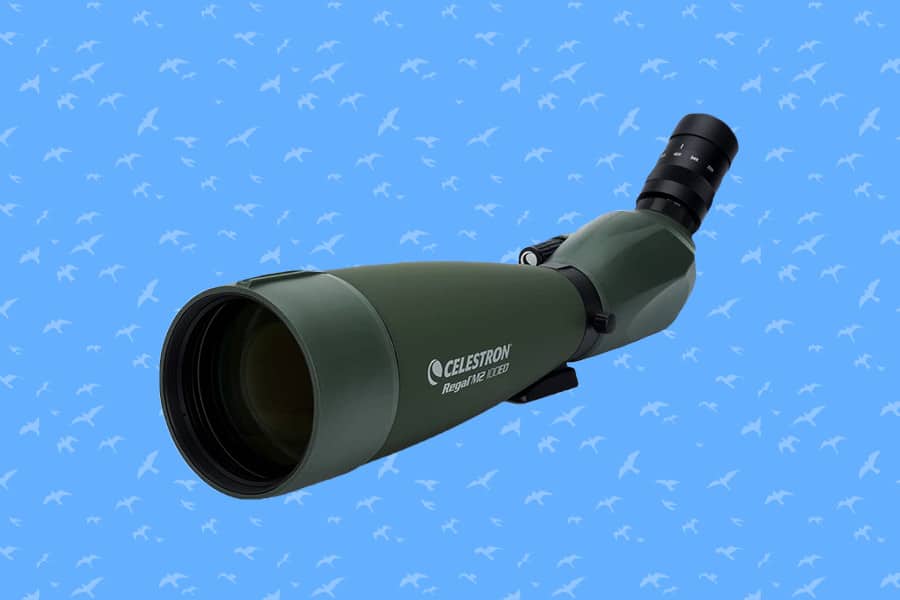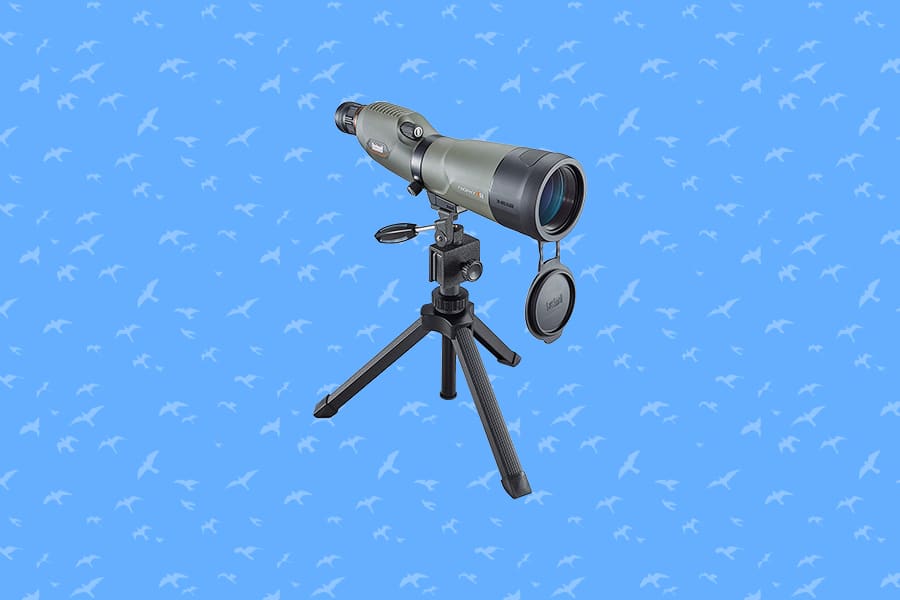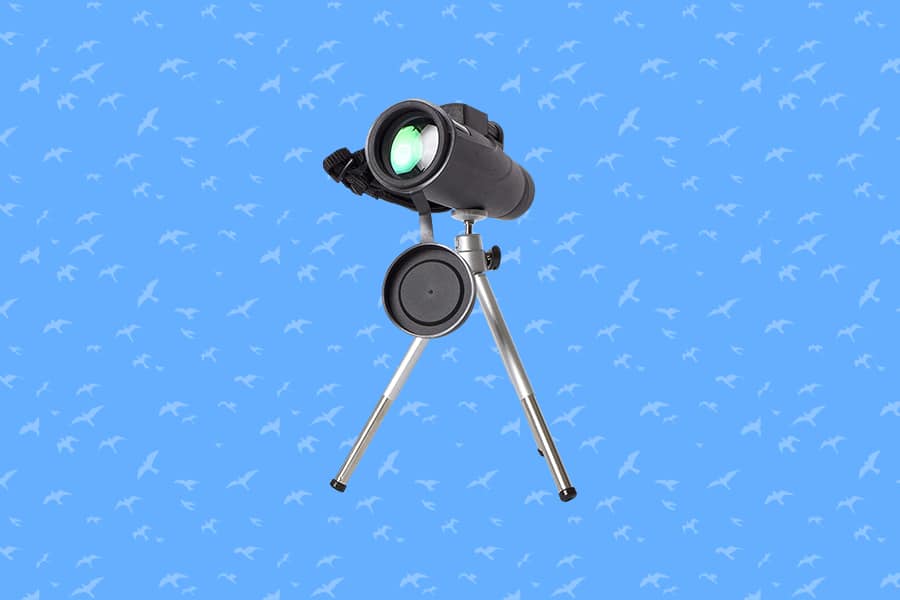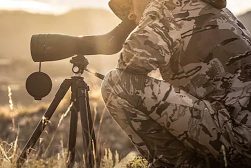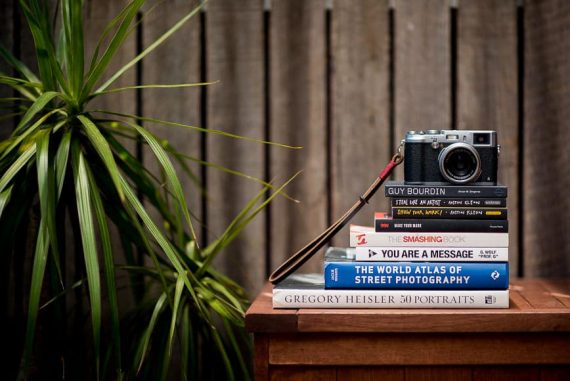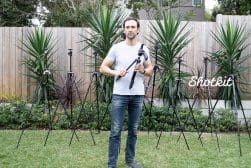
Best Spotting Scope for Birding, Astronomy, Ocean Viewing & More
Do binoculars tire your eyes or make your hands ache? Do you need more than 10X magnification to see further? You need a spotting scope! Read more in our guide.
In this guide, you’ll discover the best spotting scope for bird watching, astronomy, ocean viewing, wildlife spotting and more.
Also known as fieldscopes or digiscopes, spotting scopes offer higher magnifications than binoculars in relatively compact packages.
Since spotting scopes only have one eyepiece, they’re also easier to use, particularly if you have an overly dominant eye.
Hopefully, this roundup helped you to find a suitable option for your needs. If you think we’re missing one that should be recommended – please share it in the comments section.
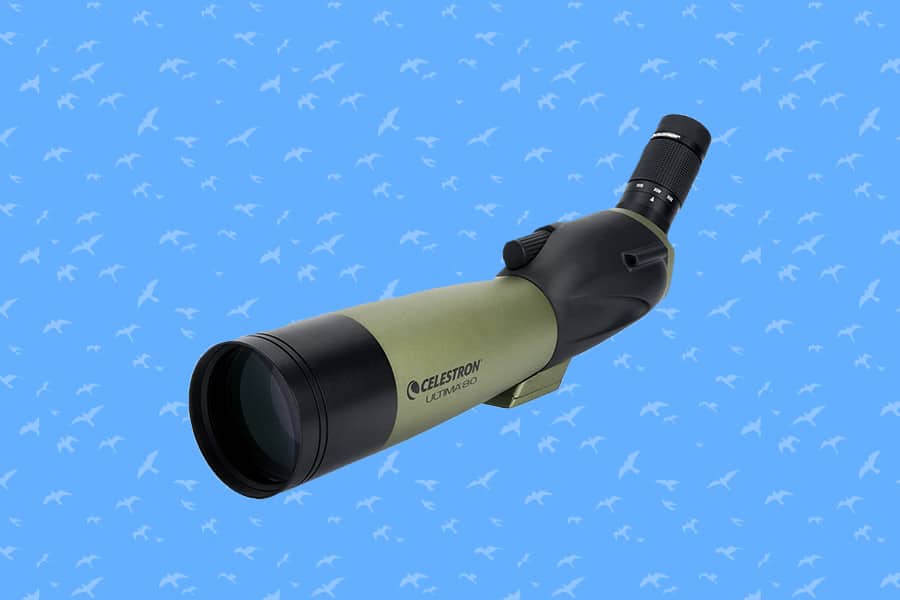
Great value angled zoom spotting scope with smartphone adapter and durable build.
The best spotting scope models offer variable zoom to change the magnification range, extra-low dispersion glass for better optical quality and a dual focus mechanism to pick up on high contrast images.
You may also be interested in using a spotting scope for photography or ‘digiscoping’, where you can attach a camera or smartphone to the scope’s eyepiece.
As for pricing, the higher the magnifying power, the more expensive the scope – we’ve included models for all budgets.
We’ll also answer all the FAQs about spotting scopes later on in this guide to help you make the right decision.
So let’s dive right into the recommendations.
Best Spotting Scopes in 2024
| Image | Product | Features | |
|---|---|---|---|
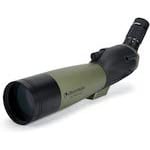 | Celestron Ultima 80OUR #1 CHOICE |
| View Price → |
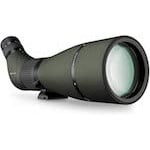 | Vortex Viper HDHIGHLY RECOMMENDED |
| View Price → |
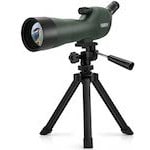 | Emarth 20-60x60AEBEST BUDGET |
| View Price → |
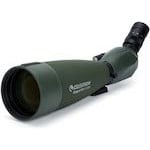 | Celestron Regal M2 |
| View Price → |
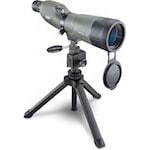 | Bushnell Trophy Xtreme |
| View Price → |
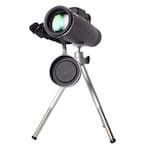 | Authentic Roxant Falcon |
| View Price → |
Celestron Ultima 80
- Weather-proof
- Durable
- Smartphone adapter included
- Straight body also available
- Heavier than other similar models
The Ultima 80 angled scope has a 45 Degree eyepiece with a magnification range of 20x to 60x. Angled body scopes such as this are often used for digiscoping, and you can attach the Ultima 80 to a tripod.
It comes with a smartphone mount included and a soft bag for protection on the go. It has a sturdy body, and the optics are weather protected for durability.
The closest focusing distance of the Ultima 80 is 8m (26ft) which is great when you’re trying to view or photograph birds and it has an objective diameter of 80mm, allowing plenty of light to be let it.
There’s also a straight-body version of the Celestron Ultima 80 if that’s your preference. This model has different accessories and features, but the magnification and quality are the same.
Vortex Viper HD
- Available in multiple sizes, magnification ranges and body shapes
- Lifetime warranty
- Built-in sunshade
- Waterproof and fog proof
- Potential overkill for the average user
“High-end optical performance without the high-end price tag” is the main attraction of this model. While this is perfectly true, it’s still a big investment, and not every user needs the power and features of a premium spotting scope like this.
Having said that, it does come in multiple magnification ranges that help control the expense if you don’t need the widest zoom. For example, between the 15-45x and the 20-60x, there’s a $200 price difference.
The Viper HD comes in a straight body or an angled one. If you want it for photographic purposes, you’ll likely want the 45-degree angle model, so I’ll focus on that since this is a photography website after all!
It has a tripod mount that fits into the Manfrotto RC2 quick release tripod head, but you can use it with other tripods as it has the standard screw size.
Once it’s on the tripod, you can rotate it for different viewing positions. The eyepiece also adjusts for extra comfort. At the front, you can pull out a sunshade to prevent glare.
All the optical pieces have an XR anti-reflective coating for better performance in low light situations, and the exterior lenses are protected from scratches thanks to Armortek coating.
It’s completely sealed to be waterproof and fog proof. The body is durable and protects against impacts. It also has a lifetime Vortex VIP warranty.
Emarth 20-60x60AE
- Tripod included
- Built-in hood
- Affordable
- Not the best image quality at 60x
- Tripod is not very stable
This is a very affordable 45-degree angle spotting scope. It has a 2o-60x magnification range – although, going over 40x, it starts to lose sharpness and image quality. You can pull the front, and it extends to work as a hood to prevent glare.
It comes with a tripod which is admittedly not very sturdy, but if you’re planning to use it with a phone, it should hold up OK – however, a smartphone adaptor is not included. The tripod extends to about a foot high (30cm).
The Emarth comes with a travel bag and a cleaning cloth for the lens. The accessories are not very high-end, but it’s nice that it even includes them for such a low price.
If you’re just a hobbyist or you don’t have a big budget, this is a good budget spotting scope to get started and try digiscoping. However, if you decide to get more professional about it, I’d recommend you upgrade the scope for better image quality.
Celestron Regal M2
- Great image quality
- Waterproof
- Multiple sizes available
- Heavy
- Pricey
Celestron is one of the leading names in long-range optics, and you can see why with this excellent Celestron spotting scope.
The Regal M2 has ED (extra-low dispersion) glass which diminishes chromatic aberration.
It’s also packed with the same proprietary XLT optical codings from Celestron’s observatory telescopes for brighter and sharper images.
The scope has an angled body, and it rotates to multiple viewing angles, and you can adjust the eyecup for better comfort and precision.
The included eyepiece has a 22-67x zoom, but you can use any 1.25″ astronomical eyepiece. The front hood extends to protect the lens from getting glare.
It includes a phone and a DSLR T-adapter so that you can make high-quality images digiscoping.
The Regal M2 is available in three sizes – 65ED, 80ED and 100ED. The numbers refer to the diameter of the front lens – this way, you can choose the one that better fits your needs and your budget.
The case material is light but durable, and the scope is waterproof and weatherproof. It has a padded case for extra protection that can stay on while you’re using it if you’re under rough conditions.
It has a dual focus system that allows you to quick-focus on your subject and fine-tune it later, making it much faster and efficient.
The quality and durability of the scope are everything that you would expect from a trusted brand like Celestron.
Bushnell Trophy Xtreme
- Waterproof
- Tripod/window mount included
- Hard and soft cases included
- No questions asked lifetime warranty
- Loses quality after 48x
- Bad eye relief
The Bushnell Trophy Extreme spotting scope is available in two sizes – the biggest one is 20-60×65, and the smaller compact spotting scope model is 16-48×50.
Both Bushnell scopes have a Porro-prism design with multi-coated optics for up to 91% light transmission.
Also included is a premium waterproof hard case for maximum protection and a compact soft case.
The Bushnell also comes with a tripod that can be used as a window mount. The tripod is approx. 12″ high, but you can use a taller one since the spotting scope uses a standard 1/4″ screw size – so it’s compatible with most models on the market.
While the Bushnell telescope is mounted on the tripod, you can rotate it, which is very useful to change the viewing position without moving it from its axis.
Bushnell is a well-known and long-established company that specializes in sports and outdoor optics, and offer a no-questions-asked lifetime warranty.
Authentic Roxant Falcon
- Compact and portable
- Accessories included
- Affordable
- Good value for money
- No hand-strap switch for left-handed users
- Short power magnification
This is a compact monocle with high definition 10x magnification and a 50mm objective diameter. Its small size and one finger focusing make it extremely easy to use handheld – it’s also very comfortable thanks to the hand strap. It also has a tripod mount if you prefer, and it actually includes a travel tripod.
Also included with the Falcon is a universal phone clamp so you can try some digiscoping. It has a retractable eyecup, so it’s easy to adjust with a phone or use it with or without glasses.
The build and material make it weatherproof, so you can safely use it in any condition. The high-definition glass is all multicoated and paired with a BAK4 Prism, you’ll have bright and sharp images.
It’s sold by a small family business in Southern California, which offers personal customer service and a lifetime replacement guarantee.
How to Choose a Spotting Scope

Birdspotting at Stone Lakes National Wildlife Refuge, Sacramento, California, USA. Credit: Erica Szlosek CC Attribution 2.0 generic license via Wikimedia
You can find spotting scopes from $50 to over $1,000, so you might be wondering why there’s such a big price difference.
Here’s a quick guide to help you understand what you should consider when choosing the best spotting scope and how to get the best value for your money.
- Objective Lens diameter
The objective lens diameter refers to the size of the front lens. A larger objective lens gives you more light, so you’ll have a brighter image – it will also weigh more though, so if weight is a consideration, you’ll need to find a compact spotting scope.
- Magnification
The magnification range of a spotting scope is like the zoom of a telephoto lens. Having a broad range allows you to use the scope in different circumstances and with different subjects.
- Glass quality and coating
This is especially important if your want to use your scope for professional photography because you want the best image quality.
Look for ED/HD, which means it’s a fluoride glass with a high refractive index to avoid chromatic aberration and fringing at higher magnifications.
Also, you’d want it to have multi-coated optics with anti-reflection. This will make the images brighter with dim light because it avoids the loss of light that would happen with reflection.
- Straight or angled
The shape of the spotting scope determines whether your eye and the subject are on the same optical line or not. You need to turn your head towards the subject with straight scopes because you’re observing the subject in a straight line.
On the other hand, with an angled scope, you can be sitting or lying down and looking up at 45 degrees.
- Built and design
There’s a wide range of characteristics that you can check out and decide basically regarding your likes and needs when searching for the best spotting scope for your needs.
For example, check the size and weight. Where is the focus dial? Does it have a shading hood? Can you fold the eyecup or adjust its position? Etc.
Also, if you’re going to be using it in less than optimal conditions, you should check how sturdy is it and the material of the case. Is it sealed to make it weatherproof or waterproof?
Finally, check if there’s a cover to protect your spotting scope. It’s an extra layer of protection from adverse weather conditions and dust and scratches – having one that can stay on while you use it comes in handy.
- Budget
The best spotting scopes may have great qualities and specs, but they can also cost as much as a camera!
So always consider if the specs and features are really the ones you need and how much use you are actually going to be using them.
Frequently Asked Questions
What spotting scope does the military use?
Some of the scopes used by the marines and the military are the Leupold Mark 4 20-60×80 and M151 12-40×60.
What is the best spotting scope under $500?
Our top choice is the Celestron Ultima 80 that costs around $250, depending on your location. You can check the specs and review at the top of this article.
Is a spotting scope worth it?
It depends on the type of subjects you are interested in and how much use are you going to give it, since spotting scopes can be a big investment. For example, if you like wildlife photography, you can use a scope for digiscoping and get amazing results.
How far can you see with a 20 60X60 spotting scope?
A 20 60×60 spotting scope can see for approximately 90-95 meters (100 yards).
How far can you see with a 4X32 spotting scope?
A 4×32 scope can see for approximately 270-280 meters (300 yards)
How much should you spend on a spotting scope?
It depends on the magnification that you need. The higher the magnification, the higher the price will be. In this article, you’ll find some great choices starting at approx. $250, but the best spotting scope models can cost as much as $6,000.
What is better: straight or angled spotting scope?
Straight scopes are better for fast focusing, since you simply point them in the direction of the subject, while angled scopes are more comfortable to use and provide a better setup for digiscoping. Which is better depends on what you intend to use it for.
What is the difference between binoculars and spotting scopes?
Spotting scopes are monocular, while binoculars are for both eyes – there are pros and cons of this, but some users say that scopes offer some eye relief, particularly if you have one over-dominant eye. Also, spotting scopes have a higher magnification than binoculars, often reaching a magnification of 60x or more. However, binoculars offer a wider field of view.
How much zoom does a spotting scope need?
A wider magnification range will make your spotting scope more versatile. Normally a good zoom on a spotting scope goes from 15x to 60x.
What do spotting scope numbers mean?
In general, spotting scopes have 3 numbers. The first two that have a hyphen in between refer to the magnification range, while the third one is the diameter of the front lens.
Do spotting scopes work at night?
Yes, you can use them for astronomy since the moon and other planets and sky objects are very bright. Also, if you use your spotting scope attached to a camera or a smartphone, you can use slow shutter speeds to capture more light. For other uses, you’ll need night vision.
Final Words
Whether you want to photograph planes, do some bird watching or take photos of the moon, a high-quality spotting scope will make your life easier.
While spotting scopes can be a big investment, the prices are more affordable than a telephoto lens with a similar magnification range.
Spotting scopes are also lighter and have better protection than regular zoom lenses, so you’ll be more comfortable with taking them out in the field in adverse weather conditions.
The trade-off is that telephoto lenses always offer better image quality. However, digiscoping is a valid solution if you’re not ready to make an investment in a huge telephoto lens.
Hopefully, this roundup helped you to find the best spotting scope model for your needs. If you think we’re missing one that should be recommended, please share it in the comments section.

Great value angled zoom spotting scope with smartphone adapter and durable build.





